Polyester is a popular synthetic fabric. Synthetic means it is not grown naturally or available freely in nature, unlike cotton and other fabrics that occur naturally. Polyester, a polymer made of petroleum, coal, air and water, is a fabric that used in association with other textiles to add certain qualities, such as resistance to wrinkling. It is also used to harden other fabric materials and give them strength. The major advantages polyester offers are its ability to dry quickly, its return to its original shape despite crumpling and its ability to change the nature of other fabrics with which it is used. It is also resistant to mildew, most chemicals and abrasion. However, it is not a flawless fabric. The major downsides of this fabric are that it is not easy to clean and it is not a breathable fabric. There are several major types of polyester fabrics used.
PET
Ethylene terephthalate, or PET, is the most popular type of polyester used for fabrics. This is the same material as the one used for making disposable water and soft drink bottles. To make PET polyster, ethylene glycol is mixed with either terephthalic acid or methyl ester along with an antimony catalyst. An antimony catalyst is a substance, produced primarily in China, that causes the chemical reaction to occur that forms the polyester fabric. If the material is used as a fabric, it has to have a high molecular weight so this reaction needs to occur at high temperature in a vacuum. The major advantage of this material is that it can be recycled. This can save considerable time in the production process.
PCDT
PCDT polyester uses a chemical combination called poly-1, 4-cyclohexylene-dimethylene terephthalate. This type of polyester fabric is not as popular as PET, but is used nevertheless as a type of polyester because it offers the fabric greater resilience and elasticity. PCDT polyester is ideal for heavier textiles such a curtains and furniture coverings. To create PCDT polyester, acid is mixed with a combination of several chemicals, including poly-1, and 4-cyclohexylene-dimethylene terephthalate. When the acid mixes with the chemicals, a chemical reaction occurs, called a spin melt, in which the polyester is produced.
Yarns
Yarns form another kind of polyester. Several types of materials are used to create this type of polyester. Filament yarns, spun yarns and textured yarns go through a special process, called "spinning the yarns," and this process creates a polyester material. These polyester fabrics can have a look more similar to naturally occurring fabrics than other types of polyester, although they are still synthetic.
Related Articles
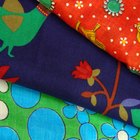
What Is Arnel Vintage Material Fabric?

What Is Cotton Plisse?

Types of Cotton Fabric

Properties of Cotton Fabric

What Is Fleece Fabric Made From?

Definition of Polyester Staple Fiber

What Is the Difference Between Acrylic ...

What Are Fire Resistant Clothes Made Of?
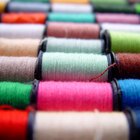
The Disadvantages of Polyester Cotton
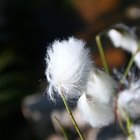
Define Cotton Silk Fabric

Rayon Spandex Care Instructions

What Is a Synthetic Polyester Fabric?

How Is Poly Cotton Made?

Which Fabrics Are Most Fire Resistant?

Spandex vs. Polyester

Twill vs a Cotton-Polyester Blend

Chi Silk Infusion Ingredients
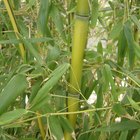
What Is the Durability of Bamboo Fabric?
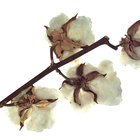
Uses of Cotton Fabric

How to Wash Dupioni Silk
References
Writer Bio
Alexis Writing has many years of freelance writing experience. She has written for a variety of online destinations, including Peternity.com. She holds a Bachelor of Arts in communication from the University of Rochester.